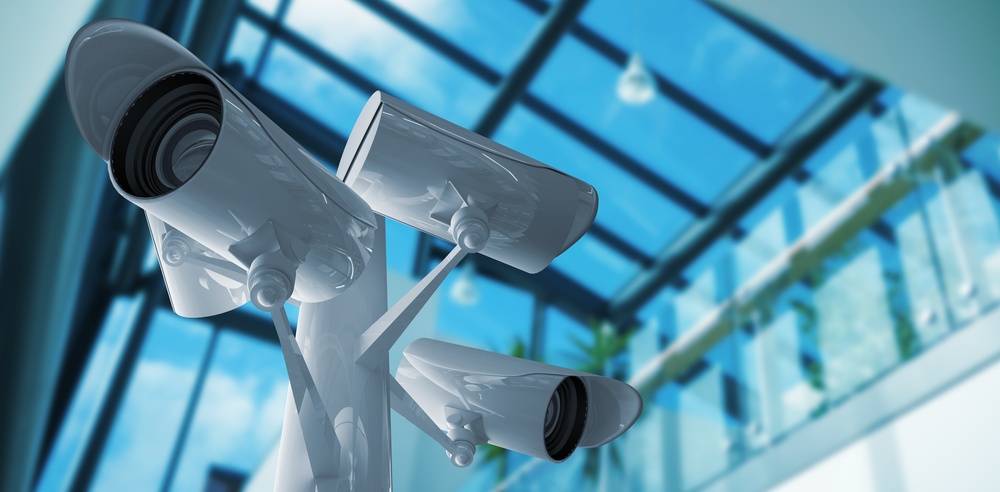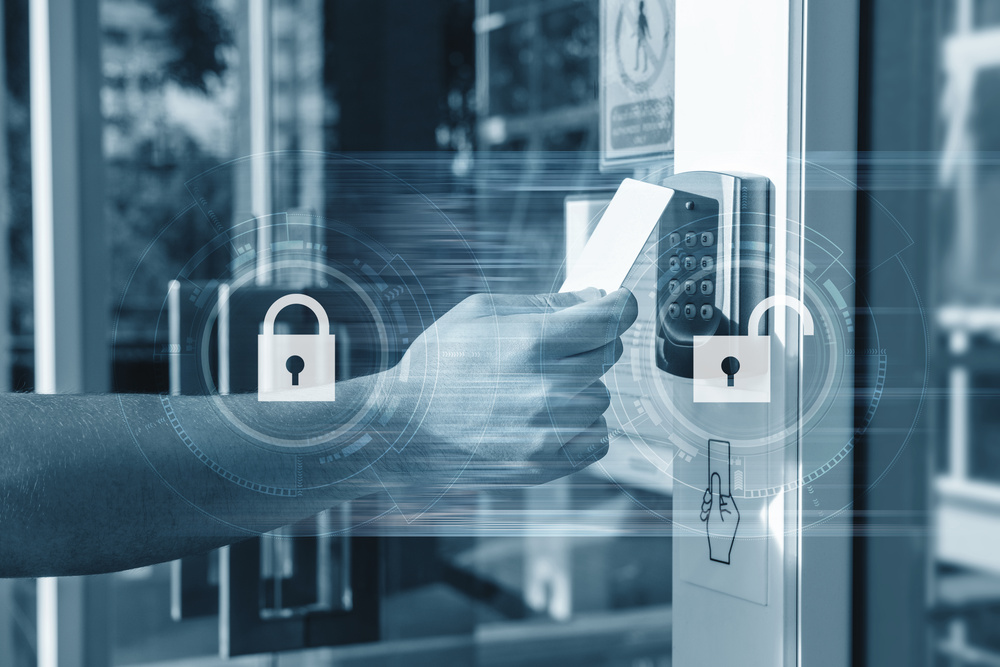
997157
Many businesses today prioritize security for their commercial buildings. It has become so vital that almost every new construction project ensures a security system is installed in the building. These systems are designed not only to provide additional protection for your business but also to help cultivate peace of mind for you as the owner or operator of the company.
If your business is currently utilizing the traditional padlock system for your buildings, you may hire reputable locksmith services like Locksmith Plus Inc. Tacoma WA to update your locks, keys, safes, etc. But if you are looking for more advanced security system upgrades, you are in the right place. Here are seven trends that may be relevant to your business:
- Gate Access Systems
The first trend is the use of gate access systems. Many companies are installing gate access systems at their entrances to reduce crime from outsiders and increase security for employees, customers, or clients. These systems allow people to come in with valid badges or other identification, but not all visitors will be authorized to enter.
These systems can be linked to other features, such as video surveillance cameras. You can use this to monitor activities in an area that conventional surveillance cameras may have previously missed. For instance, a massive warehouse may not have any security cameras. But if a gate requires identification before entering, everyone who comes in and out of the warehouse can be monitored from those cameras.
You can also set up this system so that only authorized individuals can enter the building anytime during the day or night. This system will prevent unauthorized people from entering your building without permission, which could help avoid theft or other criminal activities occurring on-site.
- Surveillance Cameras
Surveillance cameras have become more common over the past few years. Surveillance cameras are used for a variety of reasons. Some businesses use surveillance cameras to protect their inventory and other assets from theft, while others only use them for precautionary measures.
You can also use surveillance cameras for monitoring, but this should only be installed by a professional installer. For example, some surveillance cameras are installed in fixed locations near the cash register to monitor employee activities throughout the day. The camera is then set up to record video when someone walks into the area where they work. It allows managers to watch over their employees and ensure that they are not stealing from them or otherwise abusing their position at work.
They are also helpful for employees in making logical decisions, especially when dealing with customers acting up or making false claims about their transactions. Instead of talking it out with the customer, which may lead to arguments, you or your employees can show them the security footage to justify their claims.
- Cybersecurity Systems
 One of the most popular trends in commercial building security is the implementation of cybersecurity systems. If your company or commercial building handles sensitive data from clients, these systems protect your data against hackers and other online threats, such as viruses and spyware.
One of the most popular trends in commercial building security is the implementation of cybersecurity systems. If your company or commercial building handles sensitive data from clients, these systems protect your data against hackers and other online threats, such as viruses and spyware.
They also help prevent access to sensitive information by employees who may be tempted to use their accounts for personal gain or malicious purposes. For example, a security system that monitors keystrokes can be used to track when an employee is accessing company files or emailing confidential information to competitors. It can help identify potential security threats before they happen to prevent data issues that might ruin the company’s reputation.
- Lights And Motion Detectors
Another trend in commercial building security is the use of light and motion detectors. You can use these devices to detect intruders entering a home or commercial building at night or when only a few people are left to monitor the area.
This system may even be able to alert building owners if an intruder enters their business property while out at night. This technology can help prevent damage to property, physical harm, and even death.
- Commercial Property Sensors
Commercial property sensors are a great way to improve security in commercial properties. Some entrepreneurs use heat-sensing technology to detect heat signatures, while others use radio frequency identification (RFID) tags that send signals when they come into contact with human skin. In addition, some commercial property sensors can be placed inside structures like walls or floors to alert security guards if someone attempts to enter without permission.
You can install these sensors on a building’s doors, windows, and other openings. When they detect movement, they alert you or anyone in charge via email or text message. They can also trigger an alarm system if an intruder is in the commercial area. This way, you can quickly mitigate the potentially severe damage an intruder may do to your business’ property or employees’ safety.
- Access Control Devices
Access control devices are used in commercial buildings to ensure that only authorized people can enter. These devices are used to provide access control and security, and they can be installed in doors and windows as well as on walls and ceilings.
Here are six of the most common access control devices that business owners use for their commercial properties:
- Card Readers: These are one of the most popular access control devices in a business. They are used to read out identification cards that people use to get into the building. The main advantage of using card readers is that they eliminate the need to log in each time someone enters the premises manually.
- Magnetic Swipe Cards: These cards are another type of access control device that businesses use to protect their data and keep out unauthorized users. Magnetic swipe cards have the same functionality as magnetic stripe cards, but they also store additional information, which can be helpful for tracking purposes. In addition, magnetic swipe cards are more durable than magnetic stripe cards because they don’t need to be inked during usage.
- Keypads: Keys are still a popular way to control access to buildings, and there are many different types of keypad access for businesses. However, all keypads have one thing in common: they use keys to open doors. It is convenient for people who want quick access to their building, but it also makes them vulnerable to theft if someone gets hold of their keys.
- Biometric Readers: Biometric readers are another type of access control device that can be installed as part of a security system or as a stand-alone device that locks or unlocks doors, windows, and other openings. Biometric readers measure eye and fingerprint patterns compared to stored information about the person trying to enter the building. If two different people try to open the same door at the same time, for example, their fingerprints will not match up, and they will not be able to get in.
- Identification Badge Readers: These are installed at all doors and windows. They allow authorized individuals to enter a building without using a key or pass card. The badge reader will only allow individuals with specific credentials, such as a pass card, to enter.
- Proximity Card Readers: These readers can be used instead of an identification badge if too many people enter at once, as they do not require physical contact with a person’s face or hands. They need physical contact with a card carried by the user, which boosts the employee’s safety.
With these six available options in access control devices, it may be challenging to find the best one that fits your company’s needs. But once you do, you can secure the safety of everyone in your building by revoking access to unauthorized intruders.
- Fire Suppression Systems
Fire suppression systems are designed to extinguish fires as quickly as possible, using specially designed equipment to put out the fire from the burning material. This system reduces the risk of spreading fire throughout the building. Otherwise, it could cause further damage or loss of life.
In addition, fire suppression systems will protect occupants from smoke inhalation if there is an accident where a gas cylinder explodes or a gas line breaks. These systems will help reduce levels of carbon monoxide in the air and allow people to breathe easily once they leave their offices or other areas where they may be exposed to harmful fumes from burning materials such as plastic or rubber.
Key Takeaway
Maintaining primary, preventative measures around commercial properties is a crucial factor every business owner must consider. Customers and employees expect a building free from any hazards and security threats. Without investing in the physical security in your commercial building, you’ll likely lose revenue due to vandalism and theft. In other words, your commercial establishments will have a higher rate of personal liability at their helm.
Even if you are not an expert in crafting these security policies, knowing the trends in commercial building security will help you prepare for whatever may come next. This way, you can leverage systems that protect against physical threats and cyber-thieves, which can cause significant damage if they gain access to sensitive data or assets.

